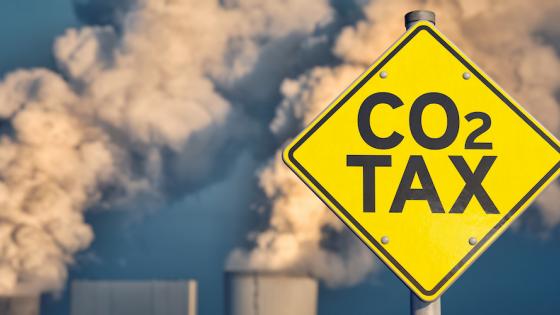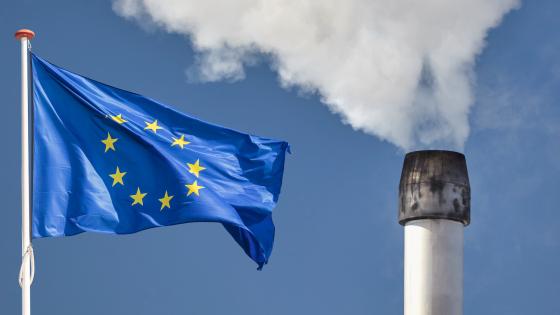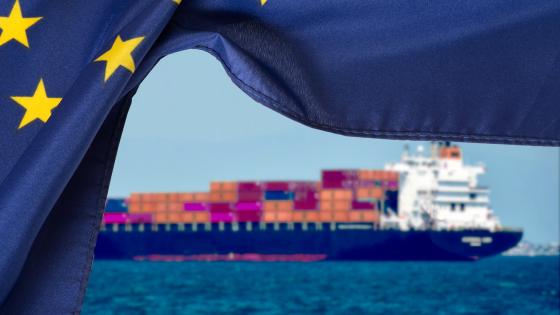Ever since the new European Commission President Ursula von der Leyen announced plans to couple her ambitious ‘European Green Deal’ with a ‘carbon border tax’, media reports have been rife with speculation about what such a measure might look like. The sparse guidelines from the Commission President herself merely suggest that the measure “should be fully compliant with World Trade Organization rules” and “start with a number of selected sectors and be gradually extended” (von der Leyen 2019).
The thing is, no such measure – known as a ‘border carbon adjustment’ – has ever been implemented. The rationale of border carbon adjustments is compelling. By adjusting for differences in the stringency of climate policies between jurisdictions, they help prevent the relocation of industrial production – and thus greenhouse gas emissions – to where climate policies are weaker. In addition to preventing such emissions relocation (or ‘carbon leakage’), a border carbon adjustment also exerts pressure on trade partners to strengthen their climate policy efforts.
Despite much rhetoric, extensive legal and economic analyses (e.g. Boehringer et al. 2012, Holzer 2014, Nordhaus 2015), and sporadic policy proposals on both sides of the Atlantic, we have scarce evidence on how a border carbon adjustment would work in practice. California’s emissions trading system – which applies a border carbon adjustment to electricity imports from neighbouring states – is the only instance where the idea has been put in practice, albeit with mixed results (Pauer 2018). Still, there are at least two sources to which we can turn for insights into the likely design of a future European ‘carbon border tax’: (a) the relevant legal framework; and (b) earlier proposals circulated in the EU.
Relevant legal framework
While it contains limited guidance specific to border carbon adjustments, EU law is a good starting point because it reflects a majority view among Member States. The directive establishing the European emissions trading system states that measures to support energy-intensive industries should be reviewed in light of international developments, and that such a review “could” include consideration of “whether it is appropriate to replace, adapt or complement any existing measures to prevent carbon leakage with carbon border adjustments” (EU 2018). It adds that such measures would have to be compatible with WTO rules, and clarifies that they would be implemented by including importers in the EU emissions trading system .
This passage suggests that a future measure is unlikely to take the form of a tax, notwithstanding the terminology used by von der Leyen. Instead, importers could face the same obligation as domestic producers under the EU emissions trading system to surrender emissions allowances. That makes a difference, because a tax would require a unanimous vote in the Council for its adoption – a hurdle that is difficult to overcome. Amending the EU emissions trading system directive to include importers, by contrast, can occur with a qualified majority of Member States. Another takeaway is that EU legislators have acknowledged various options as to how a border carbon adjustment could fit in the existing measures against carbon leakage – it could either exist alongside or replace the current practice of free allocation of emission allowances based on sectoral benchmarks.
Concern about a potential violation of international trade law is evident in the EU emissions trading system directive and von der Leyen’s guidelines. Apprehensions of a likely judicial challenge before the WTO have characterised the debate ever since border carbon adjustments were first discussed, notwithstanding a growing body of legal analysis suggesting their legal feasibility (e.g. Hillman 2013, Pauwelyn 2013). Indeed, properly designed and implemented, and with the right messaging and process, a border carbon adjustment has strong prospects of being found compatible with WTO disciplines (Mehling et al. 2019). To reduce the likelihood of a challenge, however, some basic principles should be observed in the design and roll-out of a border carbon adjustment:
- The scope should be limited to carbon-intensive basic goods (e.g., cement, steel) to reduce administrative complexity and strengthen the environmental justification of the measure
- The adjustment should apply to imports only, and not benefit exports
- Differentiation of imports by country of origin should be avoided, although exemptions may be granted for imports from least developed countries
- Imported products should be treated at least as favourably as ‘comparable’ domestic products, meaning that any climate policy obligation for importers must not be stricter than what is imposed on their domestic counterparts
- The adjustment should be based on a benchmark that reflects average performance, best available technology, or worst available technology in a sector, rather than actual measured carbon content of a covered imported product
- However, superior environmental performance of foreign producers (compared to the benchmark) should be accounted for, possibly by allowing importers to demonstrate the actual carbon content of those products
- A fair, transparent, and inclusive process should be sought throughout, providing opportunities for participation by affected countries
- Using revenues for climate finance transfers to developing countries can strengthen both the legal and political prospects of a border carbon adjustment.
Some commentators have suggested that a border carbon adjustment would violate the spirit of the Paris Agreement, which relies on nationally determined climate action. The Paris Agreement indeed opens the door to uneven climate efforts across parties. However, its overarching objectives and procedural mechanisms are all geared towards enhanced ambition over time and, eventual convergence of national climate efforts. A border carbon adjustment that enables more ambitious climate action by the EU while incentivising greater effort by its trade partners can thus hardly be considered a violation of the Paris Agreement.
Past policy proposals
To date, three policy proposals have been tabled at the European level. The first was floated by the European Commission in 2007 as part of an unpublished draft amending the EU emissions trading system directive, and would have introduced a ‘Future Allowance Import Requirement’ . The second was a political initiative launched by the French government in 2009 to include importers in the EU emissions trading system through a ‘Carbon Inclusion Mechanism’. The third proposal was initiated by the French government in 2016 and renewed in 2019.
All these proposals provide an indication of what a European ‘carbon border tax’ might look like. First, instead of introducing a new tax or other type of policy constraint, they all seek to include importers in the EU emissions trading system, which already covers the relevant energy-intensive and trade-exposed industries. This avoids the requirement of a unanimous vote in the Council, and thus faces fewer legislative hurdles.
Second, past proposals strike a balance between environmental benefits and ease of implementation by covering only products from energy-intensive sectors considered at risk of carbon leakage under the EU emissions trading system. They also avoid the need to determine the exact carbon content of foreign products by relying instead on the average sectoral emissions of European producers. The 2009 and 2016/2019 proposals, moreover, envisage giving importers an opportunity to prove that their products’ actual emissions performance exceeds the average performance. While reducing the likelihood of unfavourable discrimination, this shifts the administrative burden of emissions measurement to importers.
Third, the proposals extend the obligation to surrender allowances to all products from the covered sectors, regardless of the country of origin. That is preferable from the perspective of WTO law, as differentiation between countries can be construed as discriminatory. Still, the proposals variously suggest exempting imports from countries that have either acceded to an international climate treaty or enacted comparable mitigation policies, without setting out how that determination would be made. Elaborating a robust, objective methodology to compare climate policy ambition across countries is intrinsically difficult (Cosbey et al. 2019), and may prove the most intractable challenge in the design of any border carbon adjustment. Favourable treatment to least developed countries should be easier to justify.
Fourth, all proposals envisage introducing a border carbon adjustment alongside future free allocation. As the amount of free allowances will decline over time, a border carbon adjustment becomes increasingly relevant to compensate for the cost differences that an average trade-exposed European producer faces. These costs are based on the amount of extra allowances that said producer has to buy on the market. Importantly, none of the proposals would have requested importers to pay for the share of allowances allocated to an average trade-exposed European producer for free. Doing so would risk being considered a double benefit for European producers and thus discriminatory.
The proposals differ in terms of how they would have treated exports, with the 2007 Future Allowance Import Requirement proposal expressly setting out a procedure to issue allowances to exporters, and the 2009 non-paper declaring that treatment of exports should be decided after further study. Favouring exports under a border carbon adjustment incurs a heightened risk under international trade law (Mehling et al. 2019). Possibly in recognition of this risk, the 2016/2019 non-paper abandoned the inclusion of exports.
Lastly, an amendment to the EU emissions trading system directive proposed in the European Parliament in 2016 and the 2019 non-paper recognises the importance of a robust process, calling for an impact assessment including stakeholder consultations and a feasibility study. While it does not set out who would be invited to participate in such consultations, WTO case law has highlighted the need to ensure fair, transparent and inclusive negotiations with affected countries prior to implementing environmentally motivated trade restrictions. Hence, the elaboration of a ‘carbon border tax’ should include early notification of EU trade partners, and ensure a deliberative and open process.
Looking forward
The relevant legal framework and past proposals on border carbon adjustments in the EU reveal clues about the legal form, the sectoral coverage, and the calculation basis of a potential ‘carbon border tax’.
Despite its designation as a ‘tax’, it is most likely to be implemented through an extension of the EU emissions trading system rather than a newly created tax. And it will probably be rolled out in stages, starting with a small subset of energy-intensive sectors that have limited trade exposure, such as cement, before being potentially expanded. Administrative challenges, such as a need to ascertain the exact carbon content of imported products, can be avoided by relying on sectoral averages in Europe, thereby also limiting the risk of discrimination of trade partners.
Not all features are equally straightforward, however. Aside from the possible exemption of least developed countries, past proposals have not established a reliable and legally robust approach to exempting trade partners based on the climate policies they have enacted. Likewise, no consistent approach to the treatment of European exports or the use of revenues is evident from earlier proposals, although legal parameters caution against according favourable treatment to exports, and support allocating revenues to climate finance for affected developing countries.
All past proposals share a common fate – they never came into effect. This speaks volumes about the political resistance against them. Concerns about disrupting trade relations and sensitive climate negotiations have stifled any advances to date. However, the political context has significantly evolved, and arguments that may have been valid some years ago no longer necessarily hold sway (Mehling et al. 2018). Instead, von der Leyen’s ‘European Green Deal’ will only strengthen pressure from domestic industries to shield them against carbon leakage in a world of uneven climate efforts.
Already, EU emissions trading system allowance prices have risen fivefold in barely two years, and influential industry players have begun warming to the idea of a border carbon adjustment. The prospect of losing freely allocated allowances may prompt initial resistance in some sectors, and may argue for the gradual approach. Free allocation is set to phase out over the next decade, increasing the costs for industry just as Europe begins to gear up for climate neutrality by mid-century.
It remains to be seen how quickly the new Commission can introduce a ‘carbon border tax’. Without a concrete mandate in the EU emissions trading system allowance directive to elaborate a border carbon adjustment, new legislation or an amendment will be necessary. It will therefore likely take several years before a ‘carbon border tax’ can be rolled out. Such a long timeline would allow for a deliberate and inclusive process consistent with WTO rules. Moreover, just announcing such a measure could already help advance gridlocked negotiations and spur climate laggards into action. And that would be the best of outcomes – a world in which climate efforts are no longer as uneven, obviating the need for unilateral trade measures in the first place.
References
Böhringer, C, E J Balistreri and T F Rutherford (2012), “The role of border carbon adjustment in unilateral climate policy: overview of an Energy Modeling Forum study (EMF 29)”, Energy Economics 34(Suppl 2): S97–110.
Cosbey, A, S Droege, C Fischer and C Munnings (2019), “Developing guidance for implementing border carbon adjustments: Lessons, cautions, and research needs from the literature”, Review of Environmental Economics and Policy 13(1): 3–22.
EU (2018), “Directive (EU) 2018/410 of the European Parliament and of the Council of 14 March 2018 amending Directive 2003/87/EC to enhance cost-effective emission reductions and low-carbon investments, and Decision (E)U) 2015/1814”, Official Journal of the European Union, L 76/3, 19 March 2018.
Hillman, J (2013), “Changing climate for carbon taxes: Who’s afraid of the WTO?”, German Marshall Fund policy paper.
Holzer, K (2014), Carbon-related border adjustments and WTO law, Cheltenham: Edward Elgar.
Mehling, M, H van Asselt, K Das and S Droege (2018), “Beat protectionism and emissions at a stroke”, Nature 559(7714): 321–24.
Mehling, M, H van Asselt, K Das, S Droege and C Verkuijl (2019), “Designing border carbon adjustments for enhanced climate action”, American Journal of International Law 113(3): 433–81.
Nordhaus, W (2015), “Climate clubs: Overcoming free-riding in international climate policy”, American Economic Review 105: 1339–70.
Pauer, S U (2018), “Including electricity imports in California’s cap-and-trade program: A case study of a border carbon adjustment in practice”, Electricity Journal 31(10): 39–45.
Pauwelyn, J (2013), “Carbon leakage measures and border tax adjustments under WTO law”, in Prevost, D and G Van Calster (eds), Research handbook on environment, health and the WTO, Cheltenham: Edward Elgar, 448-506.
von der Leyen, U (2019), “A Union that strives for more. My agenda for Europe”, by candidate for President of the European Commission Ursula von der Leyen, Political Guidelines for the Next European Commission 2019 – 2024.







